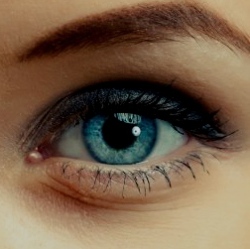
A blind woman in Texas is the first person to undergo therapy based on an emerging technology called optogenetics. If successful, the therapy will create light-sensing cells in one of her eyes and enable her to see again. Patients being recruited for a clinical trial have a degenerative disease called retinitis pigmentosa.
In this disease, the light-sensitive cells of the retina gradually die off. These cells pass electrical signals on to nerves that convey them to the brain. The therapy uses optogenetics, a technology that uses a combination of gene therapy and light to precisely control nerves. The therapy should make certain nerve cells in the woman’s eye, called ganglion cells, light-sensitive. The eye was injected with viruses carrying DNA from light-sensitive algae. If it works, the cells will do what the healthy retina’s cones and rods do: fire off an electrical signal in response to light, restoring some vision.
The patient was treated in late February in Dallas by doctors led by David Birch of the Retina Foundation of the Southwest. The therapy was developed by RetroSense Therapeutics of Ann Arbor, Michigan.
Beyond the implications for treating blind people, this trial is also being watched by the neuroscience community. If it’s successful, it suggests that optogenetics has promise not just as a lab tool for studying the brain circuits that underlie diseases like Parkinson’s and schizophrenia, but also as a potential therapy for treating people afflicted with them.
They’re following her for any side effects, and also monitoring her for any vision in the treated eye. The aim is not to get her to see with 20/20, full-color vision, but to endow the eye that currently has zero light perception with some vision. “Small things like being able to know someone is in the room with them, or being able to cross the road, are a big deal,” says Birch.
It’s especially exciting because there are currently no treatments for retinitis pigmentosa except a retinal prosthesis that uses an implanted chip to stimulate cells at the back of the eye, notes Jacque Duncan, professor of clinical ophthalmology at the University of California, San Francisco.
